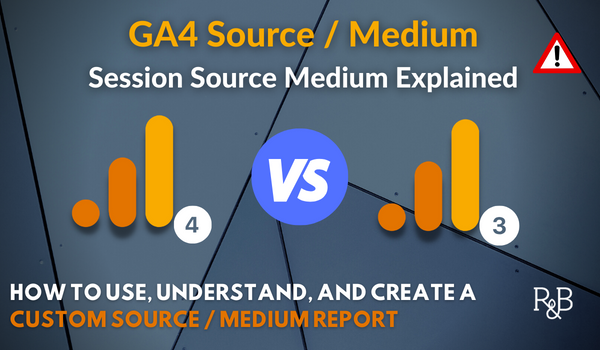Demystifying Secondary Dimensions in Google Analytics: Definition and Practical Applications
Demystifying Secondary Dimensions in Google Analytics: Definition and Practical Applications
Blog Article
Introducing the Influence of Secondary Measurement in Google Analytics on Information Evaluation and Insights
In the realm of information analytics, the usage of additional measurements within Google Analytics has actually arised as a critical device for extracting much deeper understandings and unraveling complex patterns that might otherwise stay covered. By peeling back the layers of main information sets, second measurements provide a nuanced viewpoint that enriches the understanding of user habits, web site performance, and the performance of advertising and marketing strategies.
Discovering the Concept of Second Measurements
Second dimensions in Google Analytics supply additional insights by allowing customers to evaluate key information together with a secondary quality. This feature makes it possible for a more comprehensive understanding of the primary information by including an additional layer of information for evaluation. By integrating secondary measurements, individuals can delve much deeper right into the data and uncover valuable connections that could or else go undetected. By coupling the primary information of web site traffic with additional measurements like demographics or actions, marketers can gain an extra comprehensive sight of their target market and tailor their approaches as necessary.
Understanding the idea of secondary dimensions is essential for taking full advantage of the capacity of Google Analytics. It permits individuals to sector information effectively, recognize patterns, and make informed choices based upon a more full photo of their analytics information. By discovering the numerous secondary dimensions readily available in Google Analytics, individuals can open new insights and optimize their digital advertising and marketing initiatives. In essence, secondary dimensions function as an effective device for enhancing information analysis and driving actionable results.
Enhancing Data Interpretation With Second Measurements
Having actually developed the foundational understanding of additional dimensions in Google Analytics and their critical duty in information analysis, the focus now moves towards leveraging these second features to improve the analysis of analytics information (what is a secondary dimension in google analytics). By incorporating additional measurements into information evaluation, experts can gain much deeper insights right into user behavior, web site performance, and advertising effectiveness

Additionally, second measurements aid in contextualizing key data metrics by supplying extra layers of details. This contextualization aids in comprehending the 'why' behind the data patterns, assisting analysts make informed choices and optimizations to boost overall efficiency. Inevitably, including second measurements enriches the information interpretation procedure, causing more purposeful insights and tactical actions.
Discovering Hidden Insights With Secondary Measurements
Exploring the midsts of analytics data with secondary dimensions exposes valuable understandings that would certainly or else continue to be obscured. By integrating secondary dimensions in Google Analytics, businesses can unearth hidden patterns, trends, and relationships that offer a more extensive understanding of individual actions and website efficiency. These extra layers of information enable analysts to delve much deeper into the primary measurements, such as website traffic resources or touchdown web pages, and acquire an extra nuanced perspective on just how various variables communicate with each various other.
Through the use of secondary measurements, experts can section and compare data across numerous dimensions, enabling them to recognize specific factors that affect individual engagement, conversion rates, and total success metrics. By pairing the key dimension of 'device group' with the second dimension of 'age group,' online marketers can determine which age demographics like accessing the site through mobile tools versus desktop computers.
Leveraging Secondary Measurements for Actionable Analytics
Building upon the insights revealed with second measurements in Google Analytics, companies can currently harness this enriched information landscape to drive actionable analytics and tactical decision-making. By leveraging additional measurements, companies can delve much deeper into their information to draw out important patterns, fads, and connections that might have previously gone unnoticed. This deeper level of analysis makes it possible for services to acquire a more thorough understanding of user actions, campaign efficiency, and general internet site efficiency.
One trick advantage of making use of second measurements for actionable analytics is the capability to sector information based on certain criteria. This division permits companies to tailor their campaigns and methods to various audience groups, bring about extra targeted and efficient advertising efforts - what is a secondary dimension in google analytics. Furthermore, second dimensions provide an even more alternative view of user interactions, making it possible for companies to optimize their web site material, layout, and overall individual experience
Maximizing Decision-Making With Additional Dimensions
To boost critical decision-making in analytics, leveraging additional measurements in Google Analytics can supply an extra nuanced viewpoint on individual actions and campaign efficiency. By integrating additional measurements right into data evaluation, services can dig much deeper into the specifics of their website visitors' communications and interaction patterns. This added view website layer of look at this website information permits a much more detailed understanding of exactly how various variables, such as demographics, devices, or website traffic resources, effect essential efficiency signs.

Final Thought
Finally, using additional dimensions in Google Analytics plays an essential duty in improving information analysis and uncovering hidden understandings. By discovering this idea, one can gain a much deeper understanding of user actions and make notified decisions based on actionable analytics. Leveraging secondary dimensions permits an extra comprehensive interpretation of data and optimizes the efficiency of decision-making procedures.

Report this page